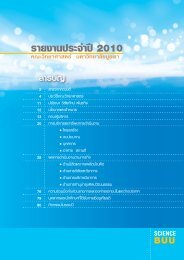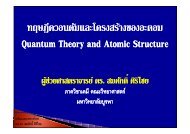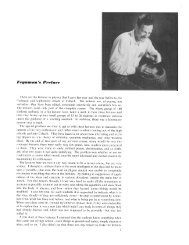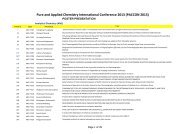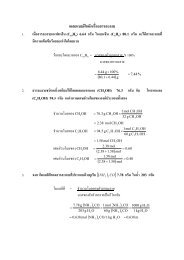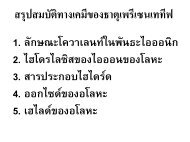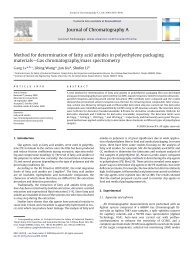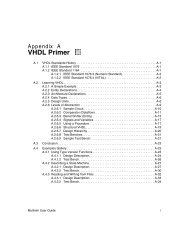USER MANUAL SWAN Cycle III version 40.72A
USER MANUAL SWAN Cycle III version 40.72A
USER MANUAL SWAN Cycle III version 40.72A
Create successful ePaper yourself
Turn your PDF publications into a flip-book with our unique Google optimized e-Paper software.
48 Chapter 4<br />
With this optional command (not fully tested) a nested <strong>SWAN</strong> run can be carried out<br />
with the boundary conditions obtained from a coarse grid WAM run (WAM <strong>Cycle</strong> 4.5,<br />
source code as distributed by the Max Planck Institute in Hamburg). For this nested<br />
<strong>SWAN</strong> run the user has to give the CGRID command to define the computational grid<br />
before this BOUNDNEST2 command. The computational grid for <strong>SWAN</strong> in geographic space<br />
is the area bounded by the WAM coarse run nest (WAM boundary points of the nest).<br />
This implies that the boundaries of the WAM nest and the boundaries of the <strong>SWAN</strong><br />
computational area should be (nearly) identical (see below). The spectral frequencies and<br />
directions of the coarse grid run do not have to coincide with the frequencies and directions<br />
used in the nested <strong>SWAN</strong> run (as defined in the CGRID command); <strong>SWAN</strong> will interpolate<br />
to these frequencies and directions in the nested run (see Section 2.6.3).<br />
Note that <strong>SWAN</strong> will accept output of a WAM output location only if the <strong>SWAN</strong> grid<br />
point on the nest boundary lies within a rectangle between two consecutive WAM output<br />
locations with a width equal to 0.1 times the distance between these output locations on<br />
either side of the line between these WAM output locations.<br />
This BOUNDNEST command is not available for 1D computations.<br />
Only boundary conditions generated by WAM <strong>Cycle</strong> 4.5 can be read properly by <strong>SWAN</strong>.<br />
A nested <strong>SWAN</strong> run may use either Cartesian or spherical coordinates. A curvi-linear<br />
grid may be used in the nested grid but the boundaries of this nest should conform to the<br />
rectangular course grid nest boundaries.<br />
WAM output files are unformatted (binary); this usually implies that WAM and <strong>SWAN</strong><br />
have to run on the same computer. For those cases where WAM and <strong>SWAN</strong> run on different<br />
types of machines (binary files do not transfer properly), the option FREE is available in<br />
this command. The distributed <strong>version</strong> of WAM does not support the required free format<br />
nesting output; WAM users who modify WAM such that it can make formatted output,<br />
must modify WAM such that the files made by WAM can be read in free format, i.e. with<br />
at least a blank or comma between numbers.<br />
Note that the format of time and date that can be accepted by <strong>SWAN</strong> is YYMMDDHHMMSS<br />
(i.e. include seconds).<br />
’fname’ a file name that contains all the names of WAM files containing the nested<br />
boundary conditions in time-sequence (usually one file per day). For example,<br />
the contents of ’fname’ can look like:<br />
CBO9212010000<br />
CBO9212020000<br />
CBO9212030000<br />
....<br />
<strong>SWAN</strong> will read the boundary data from these WAM files one after the other.<br />
UNFORMATTED the user indicates that the WAM files are binary.





